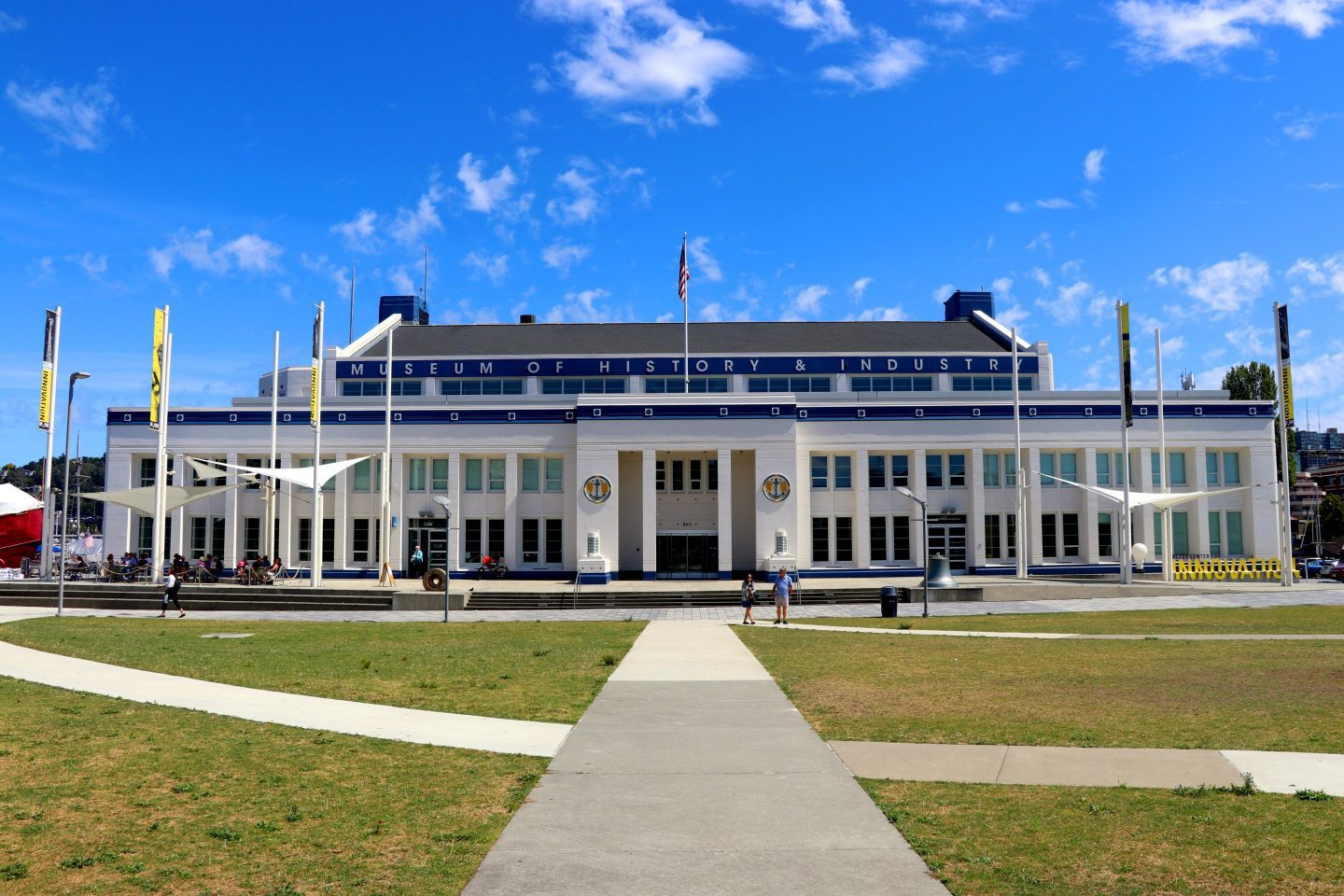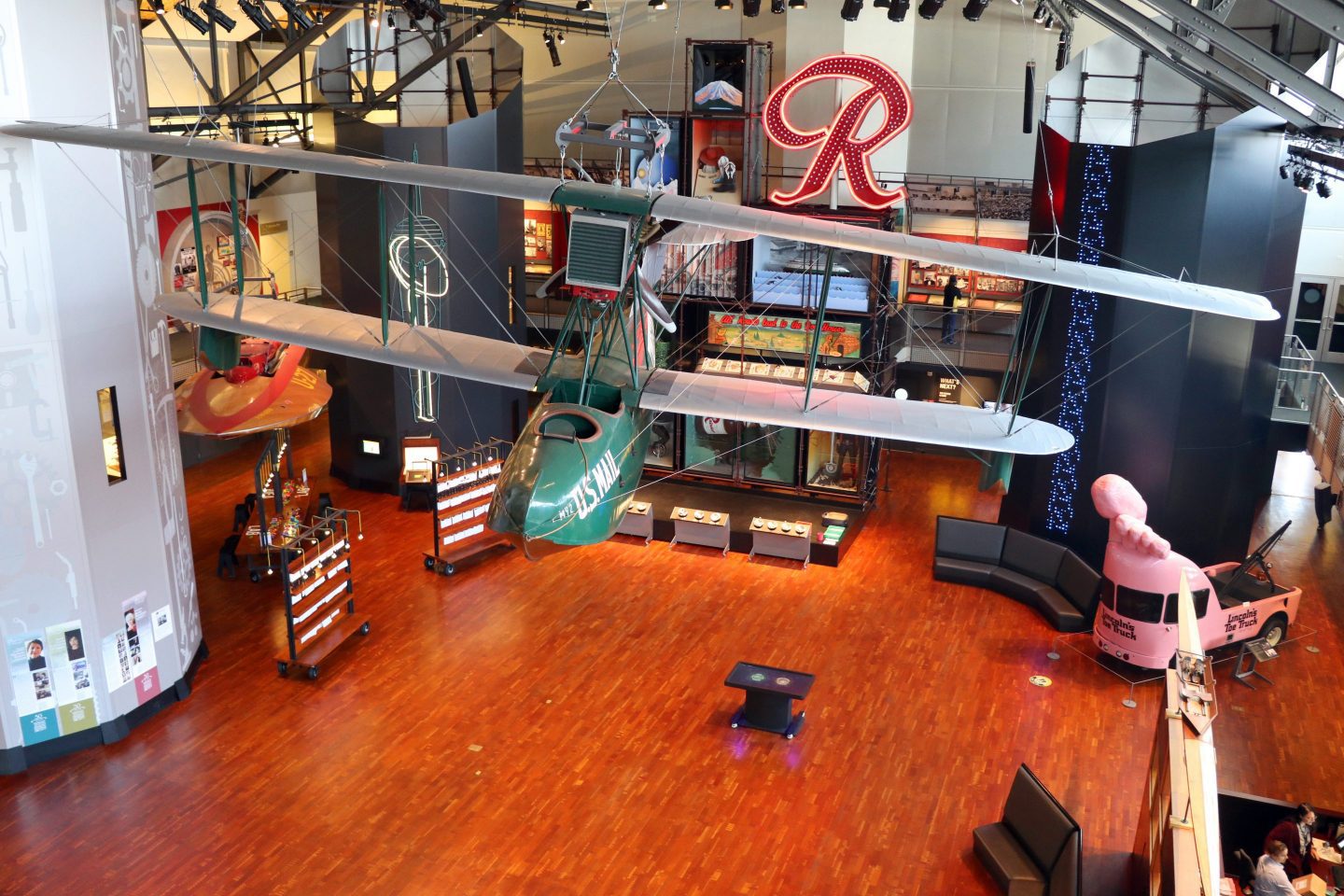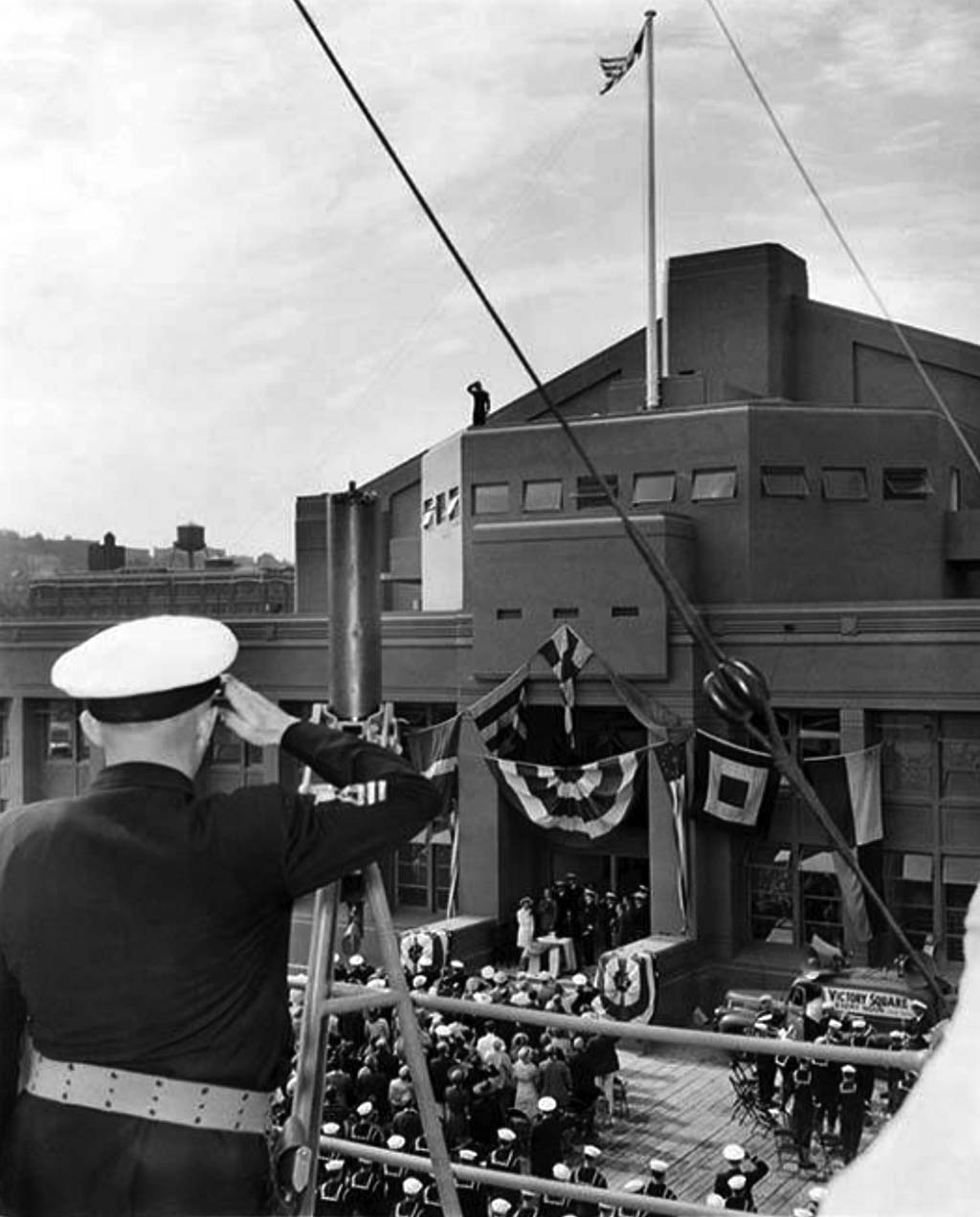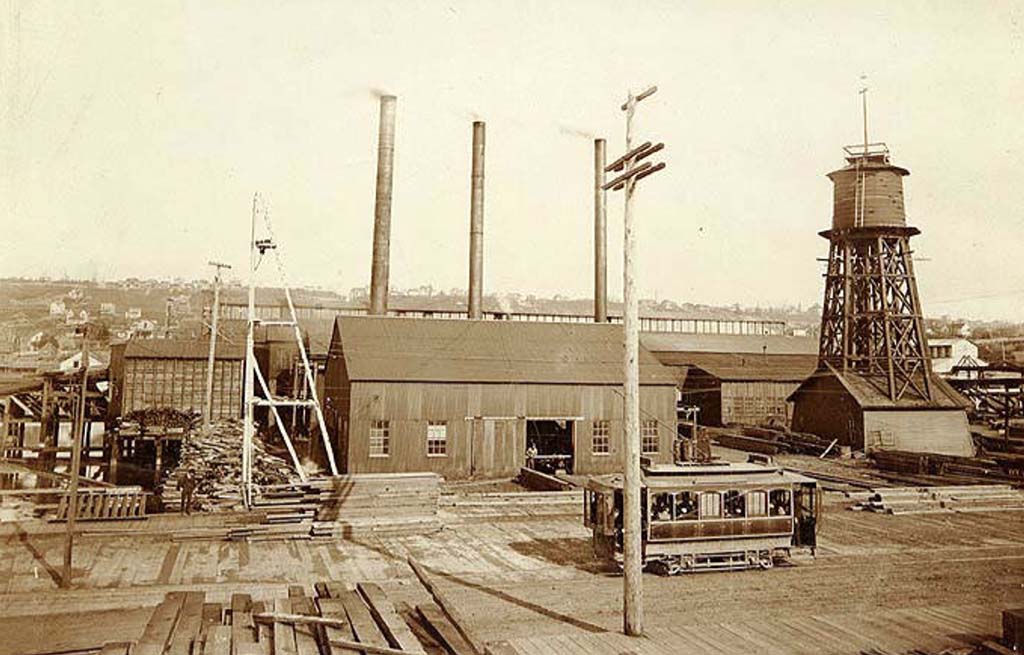-
The Museum of History & Industry
860 Terry Avenue N
The south end of the lake experienced its first industrial development when the Seattle Coal & Transportation Company railroad began running on March 22, 1872. Built to bring coal from the east side of Lake Washington to Elliott Bay, the route survived until 1878, when a more direct train connection to the coal fields was completed around the south end of Lake Washington.
Four years later, Lake Union’s first sawmill opened. It was located where the modern Westlake Avenue intersects Mercer Street. David Denny bought the mill in 1884 and renamed it the Western Mill Co. He then sold it in 1899 to J. S. Brace and Frank Hergert. Following a fire in 1909, Brace and Hergert built a much larger mill north of their original location by driving 100-foot pilings into the lake at the present location of MOHAI and placing fill along the lakeshore to support construction. They continued to operate the mill until the 1920s.
Now the home of the Museum of History and Industry, which tells Seattle’s story through exhibits and interactives, the Art Deco-style building sits on the site of the Brace and Hergert mill. Architects B. Marcus Priteca and William R. Grant designed the structure as an armory for the United State Navy. It opened in June 1942 and housed a training school featuring a “wet-trainer” room (a watertight room that could be filled with water so sailors could practice evacuating a flooded ship’s compartment), a full-scale ship’s bridge, a chart room, a radio room, a combat information center, a rifle range, and a two-story gymnasium. After the war it became the local headquarters for the United States Naval Reserve.





